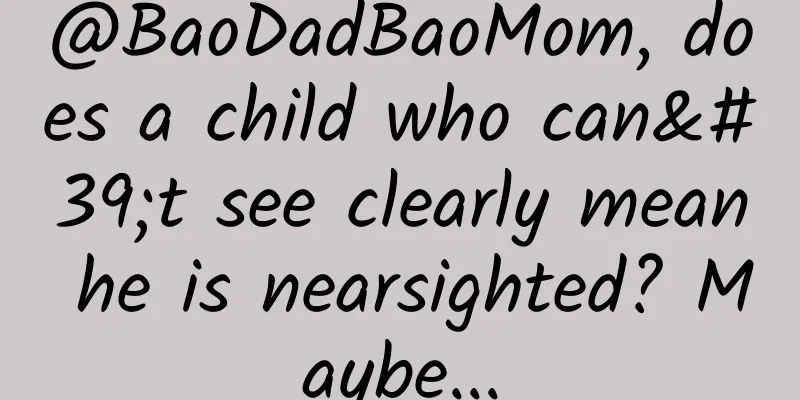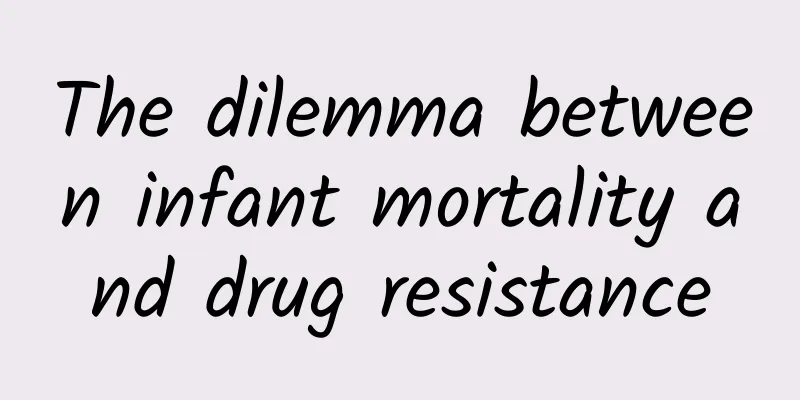@BaoDadBaoMom, does a child who can't see clearly mean he is nearsighted? Maybe...

|
Huahua (pseudonym) is 7 years old this year. Since he started primary school, Huahua's mother, Ms. Wang, has noticed that he is very slow in doing his homework and often writes in series. When she was helping him with his homework, she found that he always tilted his head when reading textbooks. Ms. Wang was worried that there was something wrong with her child's eyes, so she quickly took Huahua to the Aier Eye Hospital affiliated to Wuhan University for treatment. After dilating the pupil, it was found that Huahua had 600 degrees of myopia in his left eye, and the corrected visual acuity could only reach 0.4. After excluding the possibility of organic eye disease, Huahua was diagnosed with "anisometropia amblyopia". "I thought it was just ordinary myopia, and I never thought that the child would actually have amblyopia." Ms. Wang said. Cai Chunyan, deputy chief physician, master's tutor, deputy leader of the strabismus and pediatric ophthalmology group in Hubei Province of Aier Eye Hospital Group, and deputy director of strabismus and pediatric ophthalmology at Aier Eye Hospital affiliated to Wuhan University, said: "Compared with myopia, amblyopia is more harmful. Myopia can be corrected by wearing glasses, surgery, etc., but if amblyopia is not treated and intervened in time, it will not only lead to poor vision and cannot be corrected, but also lead to abnormal stereoscopic vision, which may have a lifelong impact on children." What is amblyopia? Amblyopia is a decrease in corrected visual acuity of one or both eyes due to abnormal visual experience (monocular strabismus, anisometropia, high refractive error and form deprivation) during the period of visual development, with no organic lesions found during eye examination. What is the difference between amblyopia and myopia? Difference 1 With proper correction of myopia, the visual acuity with glasses can reach normal, while even with correct correction of amblyopia, the visual acuity with glasses cannot reach the minimum corrected visual acuity for the corresponding age. Difference 2 Myopia means that you can see clearly at close range but not at far distance, and the image of the object falls in front of the retina. Amblyopia means that you can't see clearly at close range or at far distance. Difference Three Myopia is usually caused by heredity or prolonged use of the eyes at close range. Amblyopia is caused by abnormal visual experience during the visual development period, which leads to abnormal development of the eyeball and is a kind of delayed visual function development. Dai Hongbin, chief physician, member of the Standing Committee of the Ophthalmology Committee of Hubei Provincial Association of Traditional Chinese Medicine, and director of the Department of Strabismus and Pediatric Ophthalmology of Aier Eye Hospital affiliated to Wuhan University, reminds that children with amblyopia may have tilted heads and squinted eyes, blinked frequently, had unstable gait, poor concentration, poor hand-eye coordination, and handwriting out of grid, etc. Once parents find such a situation, they should pay attention to it and take their children to the hospital for treatment as soon as possible to avoid missing the opportunity for correction. |
<<: Invesp: The World of Blogs [Data Infographic]
>>: Self-management of Parkinson's patients during the epidemic
Recommend
Can stretch marks be removed?
Stretch marks refer to the purple cracks that app...
Uric acid accelerates kidney damage, especially these 5 types of people need early prevention and treatment!
1. High-purine diet lovers This group of people e...
Is it true that getting angry can damage your liver?
People often say that bad emotions hurt the liver...
What to do if your heart beats too fast in late pregnancy
In the late stages of pregnancy, the fetus is alm...
Girls feel nauseous and want to vomit every night
Chest tightness, shortness of breath, dizziness, ...
Why is there yellow leucorrhea?
Generally speaking, yellow leucorrhea is a sign o...
Can I wash my hair every day in summer? When is the best time to wash my hair?
We all spend a lot of time with our hair every da...
Will heat and dampness in the body affect menstruation?
Dampness and heat in the body will affect the nor...
[Medical Q&A] Is toxic bacillary dysentery poisoning?
Planner: Chinese Medical Association Reviewer: Hu...
Which one is better for liver protection, yellow chrysanthemum tea or white chrysanthemum tea? What is the difference between yellow chrysanthemum tea and white chrysanthemum tea?
We all know that chrysanthemum tea is a common sc...
There are fleshy bumps next to the nipples
Many people find that there are many small bumps ...
Will stomach pain in pregnant women affect the health of the fetus?
When pregnant women experience stomach pain, it g...
What is the reason for lower back pain and bloody leucorrhea?
Many female friends often experience back pain an...
How to wear a monologue Coca-Cola bracelet? How to wear a monologue Coca-Cola bracelet?
Since the monologue Coca-Cola bracelet has differ...
A single line on pregnancy test 2 days after menstruation
Modern science is developing rapidly, and there a...









